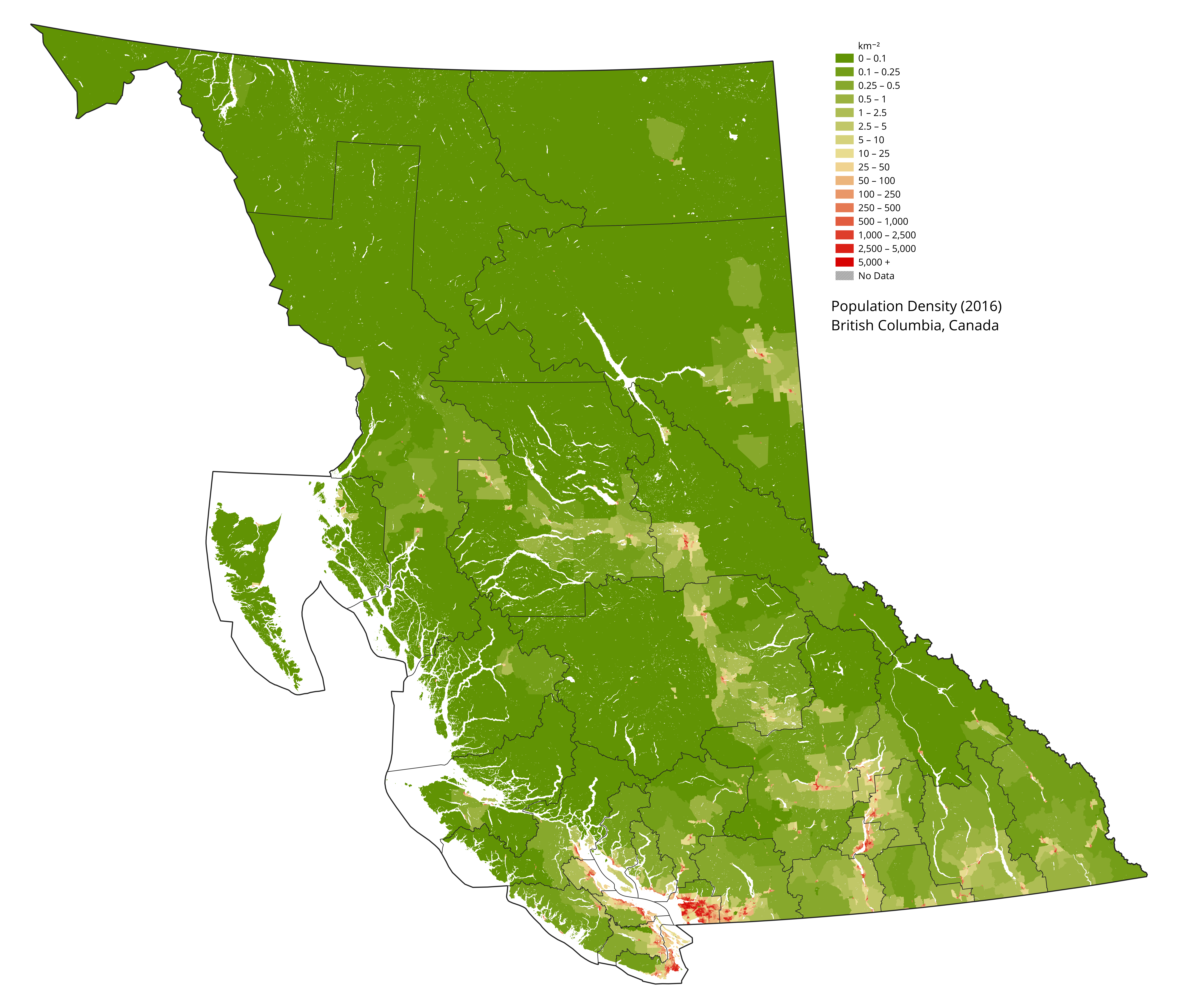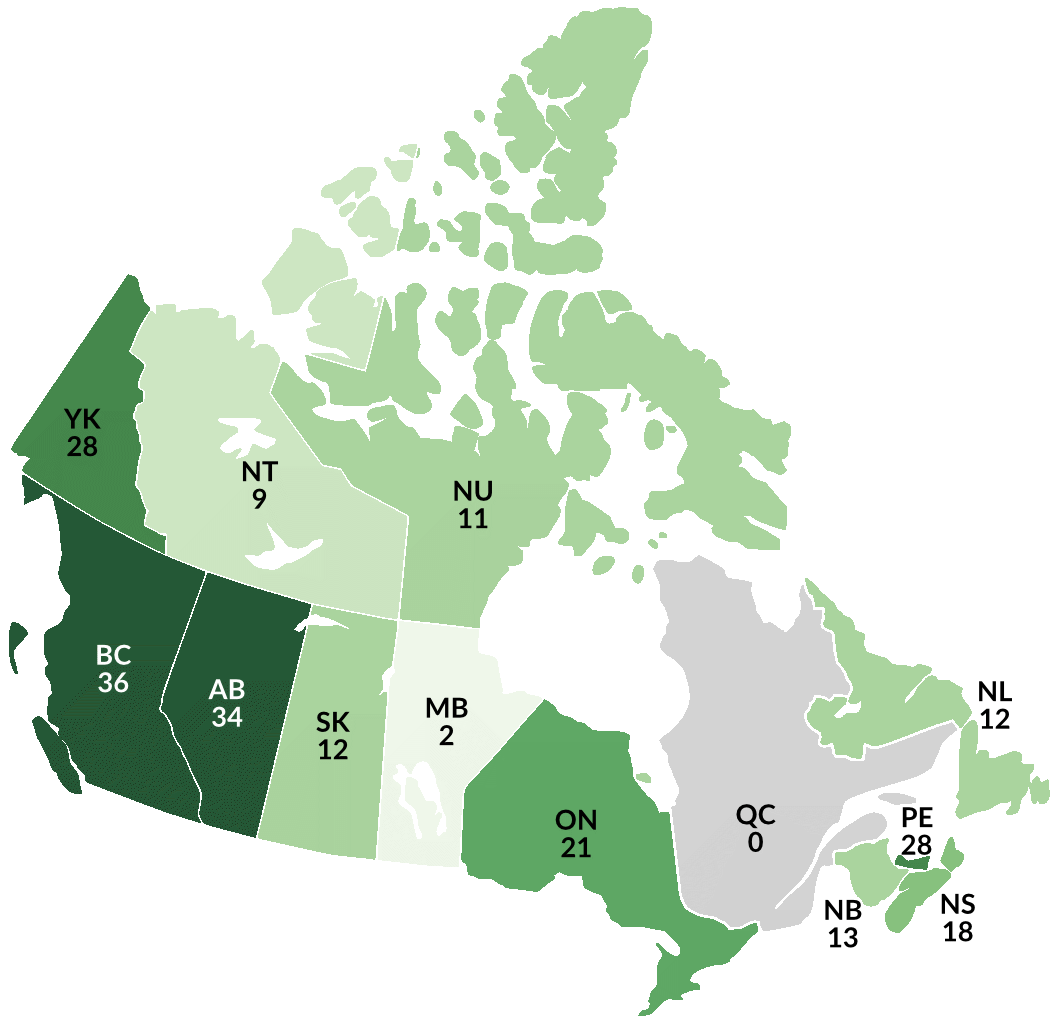Languages of British Columbia on:
[Wikipedia]
[Google]
[Amazon]
 Population of
Population of
Statistics Canada - Population
/ref>
 British Columbia has also traditionally been gaining from interprovincial migration. Over the last 50 years, British Columbia had 12 years of negative interprovincial immigration: the lowest in the country. The only time the province significantly lost population to this phenomenon was during the 1990s, when it had a negative interprovincial migration for 5 consecutive years.
''Source: Statistics Canada''Statistics Canada, table 051-0012
British Columbia has also traditionally been gaining from interprovincial migration. Over the last 50 years, British Columbia had 12 years of negative interprovincial immigration: the lowest in the country. The only time the province significantly lost population to this phenomenon was during the 1990s, when it had a negative interprovincial migration for 5 consecutive years.
''Source: Statistics Canada''Statistics Canada, table 051-0012
''Interprovincial migrants, by age group and sex, Canada, provinces and territories, annual''.
/ref>
 Population of
Population of British Columbia
British Columbia (commonly abbreviated as BC) is the westernmost province of Canada, situated between the Pacific Ocean and the Rocky Mountains. It has a diverse geography, with rugged landscapes that include rocky coastlines, sandy beaches, ...
5.368 million (2022)
Percentage of National Population: 13.2% (unchanged)
Population Growth Rate: 5.6%
Vital statistics
2020Birth rate
The birth rate for a given period is the total number of live human births per 1,000 population divided by the length of the period in years. The number of live births is normally taken from a universal registration system for births; populati ...
: 8.3 births per 1,000 (2021) (Canadian average = 9.9)
Death rate
Mortality rate, or death rate, is a measure of the number of deaths (in general, or due to a specific cause) in a particular population, scaled to the size of that population, per unit of time. Mortality rate is typically expressed in units of de ...
: 8.3 deaths per 1,000 (2021) (Canadian average = 8.3)
Infant mortality rate
Infant mortality is the death of young children under the age of 1. This death toll is measured by the infant mortality rate (IMR), which is the probability of deaths of children under one year of age per 1000 live births. The under-five morta ...
: 4.0 deaths per 1,000 live births
Life expectancy
Life expectancy is a statistical measure of the average time an organism is expected to live, based on the year of its birth, current age, and other demographic factors like sex. The most commonly used measure is life expectancy at birth ...
at birth: 82.4 years
Total fertility rate
The total fertility rate (TFR) of a population is the average number of children that would be born to a woman over her lifetime if:
# she were to experience the exact current age-specific fertility rates (ASFRs) through her lifetime
# she were t ...
: 1.17 children born per woman (Canadian average = 1.40)
Age structure
:Source: BCStatsPopulation history
:/ref>
Ethnic Origins
First-generation immigrants from the British Isles remain a strong component of local society despite limitations on immigration from Britain since the ending of special status for British subjects in the 1960s. Also present in large numbers relative to other cities in Canada (except Toronto), and also present in BC ever since the province was first settled (unlike Toronto), are many European ethnicities of the first and second generation, notably Germans, Ukrainians, Scandinavians, Yugoslavs and Italians; third-generation Europeans are generally of mixed lineage, and traditionally intermarried with other ethnic groups more than in any other Canadian province. In recent decades, the proportion of those of Chinese and Indian ethnicity has risen sharply, though still outnumbered by the historically strong population of those of German ancestry. Visible minorities have become an important factor in ethnic-based politics, though most visible minorities are less numerous than the long-standing non-British European ethnicities making up BC's "invisible minorities". ''Note: The following statistics represent both single (e.g., "German") and multiple (e.g., "part Chinese, part English") responses to the 2006 and 2016 Census, and thus add up to more than 100%.''Projections
Indo-Canadians
Visible minorities and Indigenous Peoples
:''Note: Statistics Canada defines visible minorities as defined in the Employment Equity Act which defines visible minorities as "persons, other than Aboriginal peoples, who are non-Caucasian in race or non-white in colour".''Languages
Knowledge of languages
The question on knowledge of languages allows for multiple responses. The following figures are from the 2021 Canadian Census and the 2016 Canadian Census, and lists languages that were selected by at least one per cent of respondents.Mother tongue
Figures shown are for the number of single language responses and the percentage of total single-language responses. Numerous other languages were also counted, but only languages with more than 2,000 native speakers are shown.Religion
The largest denominations by number of adherents according to the 2021 census wereIrreligion
Irreligion or nonreligion is the absence or rejection of religion, or indifference to it. Irreligion takes many forms, ranging from the casual and unaware to full-fledged philosophies such as atheism and agnosticism, secular humanism and ...
(atheist, agnostic, and so on.) with 2,559,250 (52.2%); Christianity
Christianity is an Abrahamic monotheistic religion based on the life and teachings of Jesus of Nazareth. It is the world's largest and most widespread religion with roughly 2.38 billion followers representing one-third of the global pop ...
with 1,684,870 (34.4%); Sikhism
Sikhism (), also known as Sikhi ( pa, ਸਿੱਖੀ ', , from pa, ਸਿੱਖ, lit=disciple', 'seeker', or 'learner, translit=Sikh, label=none),''Sikhism'' (commonly known as ''Sikhī'') originated from the word ''Sikh'', which comes fro ...
with 290,870 (5.9%); Islam with 125,915 (2.6%); Buddhism
Buddhism ( , ), also known as Buddha Dharma and Dharmavinaya (), is an Indian religions, Indian religion or Indian philosophy#Buddhist philosophy, philosophical tradition based on Pre-sectarian Buddhism, teachings attributed to the Buddha. ...
with 83,860 (1.7%); and Hinduism
Hinduism () is an Indian religion or '' dharma'', a religious and universal order or way of life by which followers abide. As a religion, it is the world's third-largest, with over 1.2–1.35 billion followers, or 15–16% of the global p ...
with 81,320 (1.7%).
Migration
Immigration
The 2021 census reported thatimmigrants
Immigration is the international movement of people to a destination country of which they are not natives or where they do not possess citizenship in order to settle as permanent residents or naturalized citizens. Commuters, tourists, a ...
(individuals born outside Canada) comprise 1,425,715 persons or 29.0 percent of the total population of British Columbia.Recent immigration
A large number ofimmigrants
Immigration is the international movement of people to a destination country of which they are not natives or where they do not possess citizenship in order to settle as permanent residents or naturalized citizens. Commuters, tourists, a ...
have lived in British Columbia for 30 years or less.
The 2021 Canadian census counted a total of 197,420 people who immigrated to British Columbia between 2016 and 2021.Interprovincial migration
 British Columbia has also traditionally been gaining from interprovincial migration. Over the last 50 years, British Columbia had 12 years of negative interprovincial immigration: the lowest in the country. The only time the province significantly lost population to this phenomenon was during the 1990s, when it had a negative interprovincial migration for 5 consecutive years.
''Source: Statistics Canada''Statistics Canada, table 051-0012
British Columbia has also traditionally been gaining from interprovincial migration. Over the last 50 years, British Columbia had 12 years of negative interprovincial immigration: the lowest in the country. The only time the province significantly lost population to this phenomenon was during the 1990s, when it had a negative interprovincial migration for 5 consecutive years.
''Source: Statistics Canada''Statistics Canada, table 051-0012''Interprovincial migrants, by age group and sex, Canada, provinces and territories, annual''.
/ref>
See also
*Demographics of Canada
Statistics Canada conducts a country-wide census that collects demographic data every five years on the first and sixth year of each decade. The 2021 Canadian Census enumerated a Population of Canada by year, total population of 36,991,981, an i ...
* Population of Canada by province and territory
*Demographics of Vancouver
The demographics of Metro Vancouver indicate a multicultural and multiracial region. Metro Vancouver is a metropolitan area, with its major urban centre being Vancouver, British Columbia, Canada. The Vancouver census metropolitan area, as defi ...
* Demographics of Abbotsford, British Columbia
Notes
References
British Columbia
British Columbia (commonly abbreviated as BC) is the westernmost province of Canada, situated between the Pacific Ocean and the Rocky Mountains. It has a diverse geography, with rugged landscapes that include rocky coastlines, sandy beaches, ...
British Columbia society